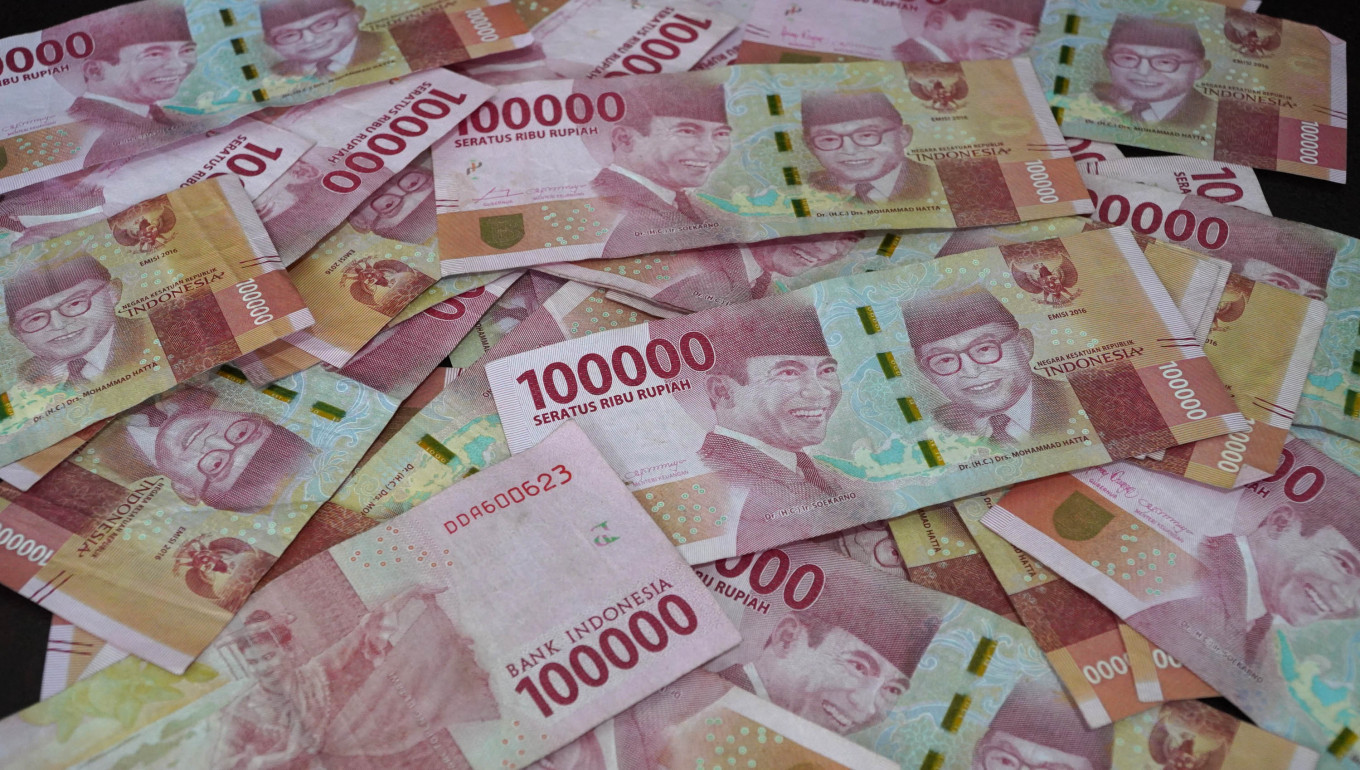Popular Reads
Top Results
Can't find what you're looking for?
View all search resultsPopular Reads
Top Results
Can't find what you're looking for?
View all search resultsIndonesia’s foreign debt rises in May as foreign investors make comeback
Private sector foreign debt, which includes borrowings of state-owned enterprises, grew at a faster rate than government debt.
Change text size
Gift Premium Articles
to Anyone
I
ndonesia’s foreign debt rose in May, driven mainly by foreign inflows to the country’s debt market as the government issues more debt papers to fund the coronavirus response and boost economic recovery, the latest data has shown.
External debt, which includes government and private sector borrowings, was recorded at US$404.7 billion in May, a growth of 4.8 percent year-on-year (yoy), Bank Indonesia (BI) data showed Friday. The growth rate of Indonesia’s external debt increased from an annualized rate of 2.9 percent in April.
Private sector foreign debt, which includes borrowings of state-owned enterprises, grew at a faster rate than government debt, supported by the mining, manufacturing, financial services and insurance sectors, as well as electricity, gas and steam procurement.
The central bank said that the higher debt position was due to higher capital inflow to the debt market amid lowering uncertainty in the global financial market and highly attractive domestic financial assets, adding that investors’ positive sentiment helped bring down the borrowing cost.
“The management of the government’s external debt is conducted in a prudent and accountable manner to support government spending toward priority sectors, particularly on COVID-19 handling and boosting national economic recovery,” BI said in a statement.
Indonesia’s budget deficit is expected to widen to 6.34 percent of GDP to cover the Rp 695.2 trillion ($47.5 billion) earmarked to strengthen the healthcare system and bolster economic growth. The government faces the daunting task of raising Rp 900.4 trillion worth of sovereign debt papers (SBN) in the second half of the year as debt financing swells significantly to fund the country’s coronavirus response. It raised Rp 630.5 trillion worth of SBN as of June this year.
The government’s foreign debt rose 3.1 percent yoy in May to $192.1 billion, driven by the weekly issuance of SBN to fund the budget deficit in 2020. Public sector debt, raised by the government and the central bank, amounted to $194.9 billion.
The private sector’s external debt grew 6.6 percent to $209.9 billion in May, compared to 4.4 percent in April, driven by higher debt from nonfinancial sectors.
The external debt is largely disbursed across four sectors accounting for 77.3 percent of overall private borrowing, namely mining, manufacturing, financial services and insurance, and electricity, gas and steam procurement.
The central bank deemed the overall external debt level to be healthy as the foreign-debt-to-GDP ratio was recorded at 36.6 percent by the end of May, up from 36.2 percent the previous month. Long-term loans account for 89 percent of the current outstanding debt.










